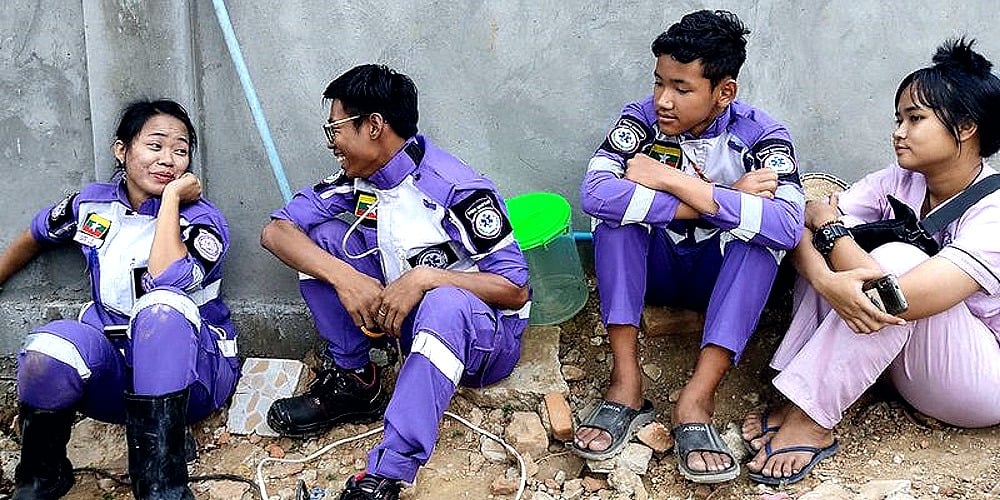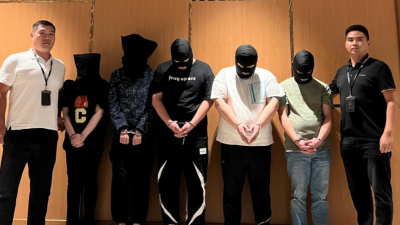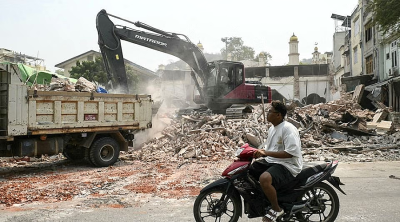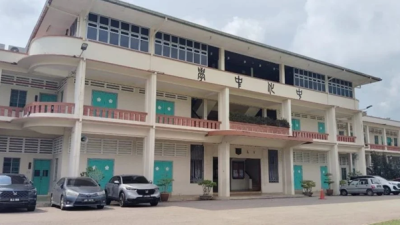KYAUKTAGA, Myanmar: At four in the morning outside a Yangon monastery, Shwe Lei and her team were wrestling 30 writhing pythons into old rice sacks and loading them into a van.
It was just another day in the life of Myanmar’s premier snake removal squad, prising pythons and cajoling cobras from dangerous entanglements with the human world before returning them to their natural habitat.
Stuffed into the sacks were three months’ worth of work, rescued from homes and apartments around Yangon and cared for at the monastery until they are fit for release to the wild.
“I love snakes because they are not deceitful,” Shwe Lei told AFP at the snake shelter run by the group, a python entwined around her body.
“If you acknowledge their nature, they are lovely.”
Her mentor Ko Toe Aung, a burly 40-year-old who said he has been hospitalized seven times since he started catching snakes in 2016, was more prosaic.
Anyone in the snake-catching game has to be “fast and agile”, he said.
“Wherever we catch a venomous snake, it is 90/10… It’s a 90 percent chance the snake will bite me.”
Their team — called Shwe Metta, or “Golden Love” in Burmese — has around a dozen members and rescued around 200 snakes last year from around Yangon.
Social media videos of the pair pulling snakes out of sink plugholes and extricating them from roof eaves have earned them the moniker “prince and princess of snakes” from local media.

On the scent
The team all have day-jobs and rely on donations for everything from their protective gear to petrol to run their purple-colored snake “ambulance.”
They mostly catch Burmese pythons — non-venomous snakes that typically grow to around five meters long and squeeze their prey of rats and other small mammals to death.
Cobras and banded krait also make homes in Yangon’s apartments and are a trickier prospect — their venom can be fatal.
More than 15,000 people were bitten by snakes in Myanmar in 2014, according to the latest available figures from the World Health Organization.
Of those, 1,250 died, a fatality rate higher than many other countries, largely due to Myanmar’s creaking healthcare system and patchy access to antivenoms.
It is a danger never far from the team’s work.
In March, they spent two days trying to remove several cobras nesting underneath a Yangon house.
Tunneling into the foundations as neighbors watched, their digging was frequently interrupted by the snakes inside spitting venom towards them.
“It stinks,” said Ko Ye Min, 31, a tattooed member of the team, as he took a break from trying to reach the nest.
Recognizing exactly which kind of stink is another skill a snake-catcher must hone, according to Ko Toe Aung.
“We have to be familiar with their smells… to identify the species of snakes before removing them,” he said.
Cobras smell “rotten”, he said.
“But the smell of a python is much stronger. Sometimes we even vomit when we bring it into the ambulance.”

‘Compassion’
Through their online videos and growing fame, the Shwe Metta team hope to encourage people to be more compassionate towards the slithering reptiles — especially if one turns up in their house.
“In the past people… used to kill snakes whenever they found them,” said Shwe Lei.
“But they have more knowledge and they know we can release snakes back into the wild. So they call us to capture and remove them.”
The rescued snakes are kept under observation in a nearby monastery until there are enough of them to justify a journey into the bush to release them.
In late March, the team walked into the sweltering backwoods of the Bago Yoma hills, 150 kilometers north of Yangon, on such a journey.
Each member carried a python in a bag slung over their shoulder until they reached a suitable spot to release it.
A few of the dazed reptiles needed gentle prods to get going, but after weeks in a cage and a five-hour car journey, Shwe Lei sympathized.
“Nobody likes the feeling of being locked up,” she said after the last one had slithered off — hopefully not to return to the human world for a long time.
“I feel happy releasing the snakes… from the point of view of compassion for each other, it is satisfying.”

ADVERTISEMENT
ADVERTISEMENT








































